Network applications can be physically connected via wire harnesses. Most built-in controllers, built-in or plug-in multimedia, and wireless network functions are powered directly from the car battery or through the ignition switch. The increasing number of sensitive in-vehicle electronic equipment is susceptible to the electrical system itself, human interference or load rejection changes. Figure 1 shows the most common power rail transients, from severe low-high energy to high-low energy transients. Of particular concern is that the transient changes on these power supply systems should meet the ISO7637-2 and ISO10605 standards. Load dump and jump start have produced the most energy transient. When the car starts, it will produce a 6V transient mutation, causing the power supply voltage to drop to 6V. When the alternator generates a charging current, the rechargeable battery is disconnected from the alternator, thereby generating load dump. Sudden changes in overvoltage that exceed the battery voltage will cause a 24V jump start transient. The battery inversion transient is caused by inadvertently inverting the battery. Figure 2 shows that the transients generated on the data lines are mainly ESD surges. Although such surges are low energy, they generate powerful electromagnetic fields. Table 1 lists several network applications and devices commonly used by Tyco Electronics to prevent circuit damage. Data lines may include media transmission lines, data buses, and sensor data lines. Special attention should be paid to compliance with AEC-Q and ISO 10605 standards. The ISO10605 ± 25kV ESD surge test can be applied to the entire system and can mimic the ESD effects of human contact with surrounding electronic modules. The AEC-Q standard focuses on device strength, including human body model testing, mechanical model testing, and charging device model testing (AEC-Q200 is for passive components and AEC-Q101 is suitable for discrete semiconductors). To avoid damage to the network and connecting components caused by the above-mentioned various over-current, over-voltage or over-temperature conditions, complex design requirements are put forward for both car manufacturers and component suppliers. LIN topology: circuit protection measures In the case of 12V DC, the bus speed for single-line operation reaches 20kbps, and LIN (Local Internet) provides a low-cost vehicle network and supplements the existing vehicle-carrying network. Typical applications for LIN include switches, actuators (such as window lift door lock modules), body control electronics to adjust comfort (such as doors, steering wheels, seats and sight glass modules), and motors and sensors (such as constant temperature air conditioning, lighting, wipers Sensors, smart wipers, smart alternators and switch panels). The LIN bus topology uses an independent host or ECU (Electronic Control Unit) and multiple nodes, as shown in Figure 3. Connect the application module to the vehicle network to enable diagnosis and service. Unless explicitly stated in the LIN standard, all voltages can refer to the local ECU grounding and positive current flows into the ECU. If there is an integrated resistor / diode network, no parasitic current path can be formed between the main line and the internal power supply (VSUP) of the ECU. This will affect the ESD surge containment equipment in the circuit. The LIN bus standard requires that when the LIN main line is short-circuited due to a positive voltage less than 26.5V or grounded, the network should resume normal operation. The ESD surge resistance on the physical layer must meet the minimum discharge voltage level of ± 2kV according to the requirements of IEC61000-4-2. However, a level of ± 8kV may appear on the ECU connector. Over-current protection is required to limit over-current when a fault or overload occurs. At the same time, it is also necessary to limit voltage spikes or stable overvoltage conditions through circuit protection equipment. Figure 4 is a coordinated circuit protection diagram showing how a resettable PolySwitch device placed at the power input protects the ECU and LIN node connectors from overcurrent conditions at the power input, and an MLV (multilayer voltage sensitive resistor) How to provide the overcurrent protection required for high current processing and energy absorption for vehicle network applications. CAN topology: circuit protection measures The CAN (Control Domain) standard has the characteristics of medium speed (high-speed CAN reaches 1Mbps). Single-channel, two-wire and fault-tolerant, this protocol is the most commonly used vehicle bus design, but it is also used in many other industries. CAN bus transceivers can allow bus supply voltages up to +/- 80V DC. However, load dump surges can generate higher transients than those specified in the ISO-7637-2 standard (maximum 86.5V), which can damage the transceiver. The operating current of the transceiver also varies from supplier to supplier. Figure 5 shows how to apply resettable PolySwitch devices and MOVs (metal oxide voltage varistors) to the power input to avoid damage due to inrush current and voltage anomalies in the center of the vehicle's power supply system. The two MLVs on the CAN receiver I / O can provide lower capacitance shunt protection and avoid the effects of electromagnetic radiation (EME) caused by common-mode voltage steps. Tyco's automotive-grade PolySwitch equipment meets the strict requirements of AEC-Q200 and SAE2685, and has a wide range of electrical characteristics and structural factors to provide the most effective protection scheme. PolySwitch devices, like traditional fuses, block dangerously high currents when they fail. However, unlike the traditional fuse, it can be automatically recovered after the fault is removed and the circuit is restarted. Another advantage is that it has a relatively flexible structural factor, so that it can be directly installed on the circuit board and set inside the electronic module, junction box and power distribution center. Tyco Electronics' MOV equipment can be installed in parallel with equipment or protected components. If an overvoltage condition occurs, the MOV device quickly transitions from a high-impedance state to a low-impedance state, thereby reducing the transient voltage on the component to a safe operating level. Under normal operating conditions, overvoltage equipment is high-impedance equipment and should not affect the operation of conventional systems. The device's low leakage function can also improve the battery's discharge rate. MOST topology: circuit protection measures MOST (Media Oriented System Transmission) can support the video and audio functions of plastic optical fiber synchronous and asynchronous data transmission and supports speeds up to 40 + Mbps. The MOST transceiver is suitable for high-bandwidth devices that require real-time processing, such as DVD players, headphones, GPS devices, and sound control. In fact, MOST is a network of nodes used to transmit various signals and data streams that appear in vehicle multimedia and infotainment systems. The MOST standard supports multiple physical interfaces, as shown in Figure 6. In the MOST standard, these applications can refer to function blocks. Each functional block includes several functions (for example, a CD player can include functions such as play, stop, eject and play time). MLV is usually used for the power supply bus of ESD protection, together with the PolySwitch device that can reset the overcurrent protection. Low capacitance PESD devices or PESD arrays can be installed on ESD protected data lines. IDB-1394 topology: circuit protection measures IDB-1394 vehicle-mounted structure can be divided into built-in network and customer convenience port, referred to as CCP, as shown in Figure 7. The standard shows a built-in plastic optical fiber (POF) vehicle network similar to the existing MOST standard. Then, the network is more stable and easier to use. Various electronic components can be connected to this network, such as DVD players, video displays, navigation systems, radio hosts, and communication equipment. The CCP port includes an in-vehicle class 1394b physical layer and connector, allowing users to connect portable devices to vehicles and access audio and video services through the IDB-1394 interface. The CCP port uses a standard connector and is designed to power the device. IDB-1394 is designed for high-speed multimedia applications. The bus speed is up to 800Mbps and requires a resettable overcurrent protection on the powered port. As shown in Figure 8, PolySwitch devices can be used to limit dangerously high currents in the event of a fault. MLV can be installed on the power bus to avoid damage caused by ESD surges and overvoltage transients. Low capacitance PESD devices or PESD arrays can also be installed on the data lines to help provide ESD protection. FlexRay topology: circuit protection measures The FlexRay protocol is designed specifically for wire-controlled applications, such as wire-controlled brakes and wire-controlled steering wheels. The wire-controlled network mode supports synchronous and asynchronous data transmission, with a data transmission rate of approximately 10 Mb / s, and features time-triggered and event-triggered behavior, redundancy and fault tolerance. The structure supports a "bundle" of 2 nodes to 64 nodes, and its function mainly depends on two types of processors-ECU and "active star". FlexRay communication is performed between ECUs via a common bus or a star connection. The bus input of the FlexRay component must avoid short circuits between the main line and the system supply voltage or ground potential. Figure 9 shows the adjusted overcurrent / overvoltage protection scheme of the ECU. This solution uses a PolySwitch device for overcurrent protection, byteflight topology: circuit protection measures The byteflight protocol is an on-board data bus, developed to provide a very safe and fault-tolerant electronic communication method between on-board components. byteflight achieves speeds above 10 Mbps in 2-wire or 3-wire plastic optical fiber (POF) in bus, star or cluster configurations. The use of POF in the system architecture enables its functions to be electrically independent in terms of data. However, the node still draws current from the vehicle's power supply bus and is affected by electromagnetic interference. The components that make up the network, such as microprocessors, byteflight controllers and optical transceivers, are susceptible to damage due to power supply spikes and reverse voltages. Integrated circuits (ICs) may include ESD protection, but are usually limited to less than 2kV. As shown in Figure 10, PolySwitch devices and MLV can protect these modules from damage caused by high-energy overvoltage and overcurrent transients. Bluetooth topology: circuit protection measures Although the Bluetooth standard was not originally designed for in-vehicle environments, it has created new market prospects for mobile electronic devices that communicate between vehicles and their systems, such as cell phones, MP3 players, and navigation devices. Protecting the exposed communication interface from ESD and other voltage surges caused by the antenna and instrument radio (RF) interface is a very important design issue. Figure 2 shows how a PolyZen integrated overcurrent / overvoltage device can help protect the power input of the Bluetooth module. MOV or surface-mounted MLV can also be used to avoid voltage transients on the car microphone and microphone interface. PESD equipment can be used to avoid ESD surges on wires. funcTIon ImgZoom (Id) // Re-set the image size to prevent the form from being broken {var w = $ (Id) .width; var m = 650; if (w <m) {return;} else {var h = $ (Id) .height; $ (Id) .height = parseInt (h * m / w); $ (Id) .width = m;}} window.onload = funcTIon () {var Imgs = $ ("content"). getElementsByTagName ( "img"); var i = 0; for (; i N-NET Modular Media Converter Chassis` transparently extend copper to copper, copper to fiber, multimode to multimode and multimode to single mode fiber by pairing modules in this high density chassis with Media Converter Chassis standalone media converters, or standalone Ethernet extenders. Media Converter Chassis Media Converter Chassis,14 Slots Media Converter Chassis,16 Slots Media Converter Chassis Shenzhen N-net High-Tech Co.,Ltd , http://www.nnetswitch.com
The peak potential of + 100 / -150V is due to the ignition procedure when electrically burning a gasoline mixture. The frequency of the peak potential depends on the number of cylinders and the rotational speed sent to the engine. 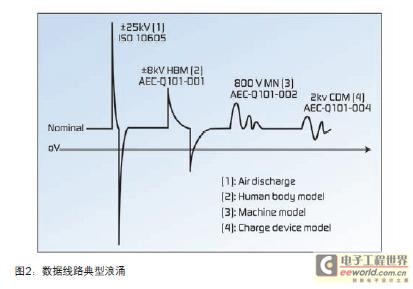

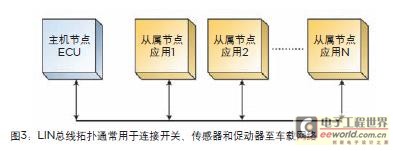
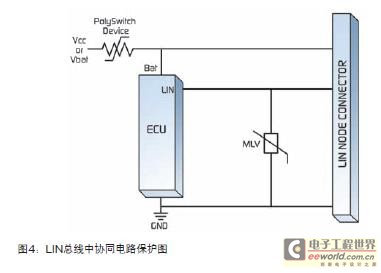

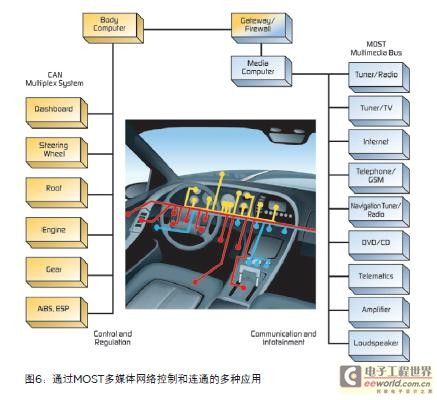
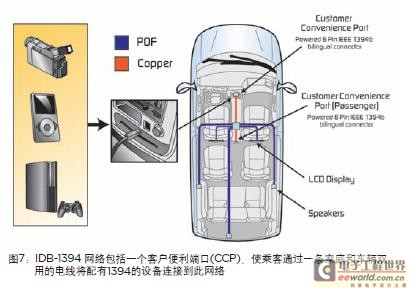
The power supply feature does not require an additional battery or a separate power cord, so that customers do not have to worry about whether the inserted device is already powered on. 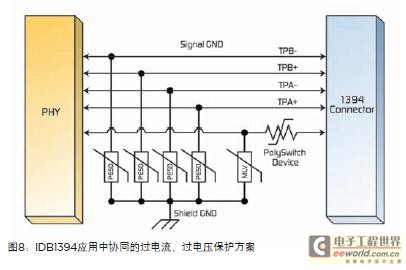
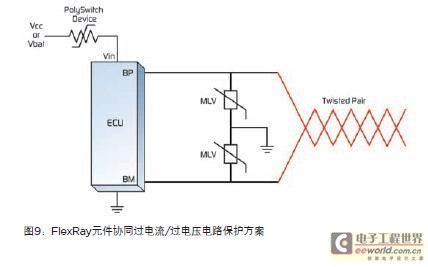


NT-R14D NT-R16D is a kind of cost-effective rack (2U) widely used to provide power for media converter modular type in the equipment room. Different types of card type media converter developed by our company can be inserted into this rack, of which the total slots are up to 16. It is furnished with two power supplies: main power supply and spare one, and supports its automatic switch-over.
New passenger cars, trucks, buses, and even motorcycles have become mobile networks, connecting many features and functions, such as built-in control, mobile media, and wireless networks. Applications for infotainment systems, telematics, security control, etc. require the use of several existing network standards, such as LIN, CAN, MOST, IDB-1394, FlexRay, Byteflight, built-in control Bluetooth, and other standards.
June 09, 2020